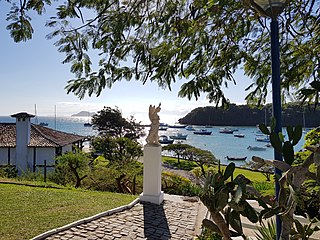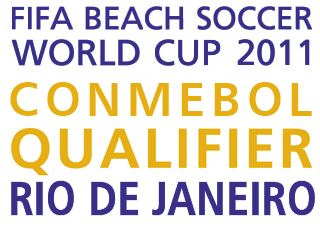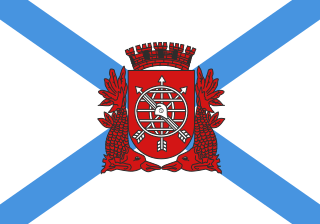History
The Ouro Verde was known as one of the world's great small hotels during most of the 1950s and 1960s. In the early 1960s the hotel was considered "posh" and was often visited by English-speakers. A visitor in 1966 described the Ouro Verde on Copacabana as an old hotel that was almost unknown to tourists but very popular with business people. It was small, clean, very well run and had an excellent restaurant. A retired Swiss hotel manager and his wife operated it as their pension. It was adjacent to large luxury hotels that were well-known by the tourists.
Brazil moved its government from Rio to Brazilia in 1960s, and the city decided to compensate by helping the tourist industry. Every year during the high tides Copacabana beach had to be closed, traffic was interrupted and several streets were flooded. Between 1960 and 1970 the shoreline was modernized, with a wider beach, broad sidewalks and hotel upgrades and new construction. The restaurant at the Hotel Ouro Verde was among the elegant and expensive dining places that provided good food and good service to the local elite, executives and foreign guests, other being O Bife de Ouro in the Copacabana Palace Hotel and Le Bec Fin.
In 1974 it was possible to dine on the patio outside the hotel. Room rates were considerably higher than the neighboring Lancaster Hotel. In 1979 the restaurant was famous for its seafood. In the 1980s the hotel was described as "aging but classy". The hotel was air conditioned. A tunnel ran from the hotel underneath the Avenida Atlantica to the beach, so guests could avoid risking their lives crossing the busy street. At that time there was no social safety net in Brazil, there was extreme poverty and tourists walking along the beachfront had to watch for pickpockets and were constantly accosted by beggars and prostitutes. The hotel had security staff permanently stationed on each floor. A 1982 article recommended the restaurant on the second floor of the hotel for a gourmet continental meal.
The famous soccer player Pelé rarely gave press interviews, apart from one for the Brazilian edition of Playboy in 1980, and a second in 1993 in his suite at the Ouro Verde Hotel. By 2007 the hotel was no longer as fashionable as in its heyday but provided good value and a quiet, traditional environment. The 2009 Rough Guide to Rio de Janeiro said the hotel exterior was not impressive, but the interior was "discreetly elegant with spacious and well-kept rooms". It recommended the more expensive rooms with the sea views. A 2011 travel guide said the hotel was considered one of the most convenient of the many hotels along Copacabana beach. It had spacious and rather old-fashioned rooms with carpets that were rather worn out. There was a panoramic view of the ocean, at least from the "luxo" rooms. Since then the hotel, now the Atlantico Praia, has been renovated.

Copacabana is a bairro (neighbourhood) located in the South Zone of the city of Rio de Janeiro, Brazil. It is most prominently known for its 4 km (2.5 miles) balneario beach, which is one of the most famous in the world.

Ipanema is a neighbourhood located in the South Zone of the city of Rio de Janeiro, Brazil, between Leblon and Arpoador. The beach at Ipanema became known internationally with the popularity of the bossa nova song, "The Girl from Ipanema", written by Antônio Carlos Jobim and Vinícius de Moraes.
Copacabana most commonly refers to:

Portuguese pavement, known in Portuguese as calçada portuguesa or simply calçada is a traditional-style pavement used for many pedestrian areas in Portugal. It consists of small flat pieces of stones arranged in a pattern or image, like a mosaic. It can also be found in Olivença and throughout former Portuguese colonies. Portuguese workers are also hired for their skill in creating these pavements in places such as Gibraltar. Being usually used in sidewalks, it is in town squares and atriums that this art finds its deepest expression.

Sugarloaf Mountain is a peak situated in Rio de Janeiro, Brazil, at the mouth of Guanabara Bay on a peninsula that juts out into the Atlantic Ocean. Rising 396 m (1,299 ft) above the harbor, the peak is named for its resemblance to the traditional shape of concentrated refined loaf sugar. It is known worldwide for its cableway and panoramic views of the city and beyond.

Armação dos Búzios, often referred to as just Búzios, is a municipality located in the state of Rio de Janeiro, Brazil. It is 173 km east of the city of Rio de Janeiro. By 2020, its population consisted of 34,477 inhabitants and its area of 71 km2. Today, Búzios is a worldwide tourist site.

Tourism is a growing sector and key to the economy of several regions of Brazil. The country had 6.589 million visitors in 2018, ranking in terms of the international tourist arrivals as the second main destination in South America after Argentina and third in Latin America after Mexico and Argentina. Revenues from international tourists reached US$5.8 billion in 2015, continuing a recovery trend from the 2008–2009 economic crisis.

Araruama is a municipality in the state of Rio de Janeiro, Brazil. Located at 22°52'22" of latitude South and 42°20'35" of longitude west, at an altitude of fifty feet. In 2020, its population was 134,293 inhabitants, which places it the second largest population in the Região dos Lagos.

The 1995 Beach Soccer World Championships was the first edition of the Beach Soccer World Championships, the most prestigious competition in international beach soccer contested by men's national teams until 2005, when the competition was then replaced by the second iteration of a world cup in beach soccer, the better known FIFA Beach Soccer World Cup. It was organised by Brazilian sports agency Koch Tavares.

The 2003 Beach Soccer World Championships was the ninth edition of the Beach Soccer World Championships, the most prestigious competition in international beach soccer contested by men's national teams until 2005, when the competition was then replaced by the second iteration of a world cup in beach soccer, the better known FIFA Beach Soccer World Cup. It was organized by Brazilian sports agency Koch Tavares in cooperation with and under the supervision of Beach Soccer Worldwide (BSWW), the sports governing body.

The 2011 FIFA Beach Soccer World Cup CONMEBOL qualifier, also later and commonly known as the 2011 South American Beach Soccer Championship, was the fourth Beach Soccer World Cup qualification championship for South America, held from July 31– August 7 on Copacabana beach in Rio de Janeiro, Brazil. The tournament was originally scheduled to take place from 7 – 14 May 2011.

The Hotel Glória was a grand hotel in the Glória neighbourhood of Rio de Janeiro, Brazil. It was built by entrepreneur Rocha Miranda for the International Exhibition of 1922 to commemorate the centennial of Brazil's independence. It opened on August 15, 1922. The hotel was designed by Joseph Gire, who also designed the Copacabana Palace. It was reportedly the first reinforced concrete building to be built in South America and was erected with the aid of German engineers.
Copacabana Hotel Residência is a hotel in Copacabana, Rio de Janeiro, Brazil, located at Rua Barata Ribeiro 222. It contains apartments which have self-service facilities, 120 suites in total.

Muriqui is a district of the municipality of Mangaratiba, located within the Greater Rio de Janeiro, Brazil. It is part of the Green Coast. Highway BR-101 passes through the district.

Avenida Atlântica is a major seaside avenue in Rio de Janeiro, Brazil. It is 4 kilometers long, and spans the entire length of the neighbourhoods of Copacabana and Leme.
Twelve venues in twelve Brazilian cities were selected for the 2014 FIFA World Cup. The cities also housed the 32 teams and fan-zones for spectators without tickets for the stations. Around 3 million tickets were put on sale of which most were sold out in a day. Eighteen locations were presented as potential host cities with the twelve successful candidates announced on 31 May 2009: Belém, Campo Grande, Florianópolis, Goiânia and Rio Branco were rejected, while Maceió had already withdrawn in January 2009.

Copacabana Palace, is a hotel in the city of Rio de Janeiro, Brazil, facing Copacabana beach. Designed by French architect Joseph Gire, it was built in a style that follows the line and model of the great beach hotels of the nineteenth and early twentieth centuries, and opened on August 13, 1923.

The following outline is provided as an overview of and topical guide to Rio de Janeiro:















